3D printing in 2018: the most interesting in the industry
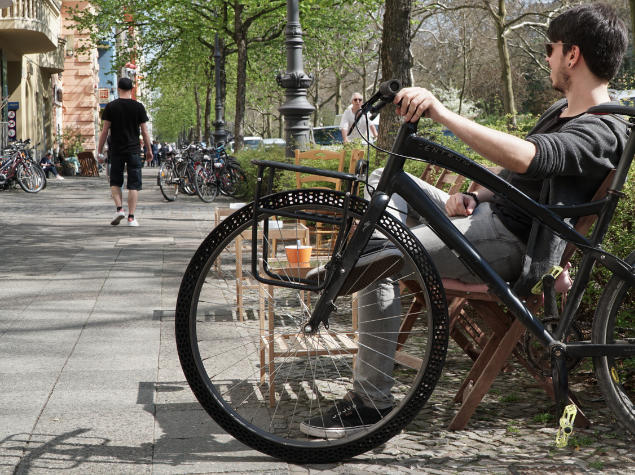
Printed bicycle tire from BigRep
In this material, we tried to collect the brightest news of 3D printing in 2018: strange techniques, unusual objects and amazing uses of technology. And let the year is not over yet, but he has already brought a lot of news. If we forgot something important - write your additions in the comments.
1. New devices and printing techniques
Sometimes it seems that engineers are trying to stuff everything into a 3D printer like the eccentric inventor of rubber, Charles Goodyear, who added salt, pepper, oil, and even soup to rubber. Some of these technologies in the future will undoubtedly “shoot” and become part of the innovation.
')
Scientists from the Berkeley laboratory have developed a method of bulk printing using water, which is placed in silicone oil. Water yarns with a diameter of 10 μm to 1 mm form various structures in an oil medium due to a thin needle printer. And so that the form was stable, the liquid is covered with a special soapy substance. Scientists have already managed to ensure that the printed objects are preserved for several months. The technology of "water printing" in the future can be used in chemical synthesis and the creation of materials for fluid electronics (in flexible devices).
ACEO , a subsidiary of the Wacker chemical company, has been exploring printing possibilities with silicone since 2016. It is a biocompatible material, safe for food and highly elastic, and its scope is wide. In 2018, the company mastered the printing technology of 100% fluorosilicone: prior to this, fillers and catalysts were used to create products. The novelty has already been demonstrated at the trade show in Lyon (France).
A team of engineers and medical researchers from the University of Minnesota has developed 3D printed implants for patients suffering from spinal cord injury. A complete rupture of the spinal cord is accompanied by a loss of motor and sensory functions below the injury site. The created implant consists of a silicone base, which acts as a supporting structure, and stem cells, providing communication between the damaged brain areas. To put the cells on the base, I had to develop a specialized 3D printer. The development will help patients partially regain lost functions, such as bladder control and involuntary leg movements.
One of the problems of modern additive technologies is in limiting the field of printing. In order to print a house, you actually need a printer the size of a house and a half. The problem is solved in different ways; most often objects are printed in parts, and then collected. But the Chinese company DediBot proposed its solution: a printer-drone, which can work on any area. The device, called the Flying Elephant, is equipped with an extruder for 3D printing and six rotors, and the mortar is fed through a tube. The developers claim that printing accuracy is very high: up to 0.1 mm. But a significant limitation for printed drones is the battery capacity, which lasts for several hours.
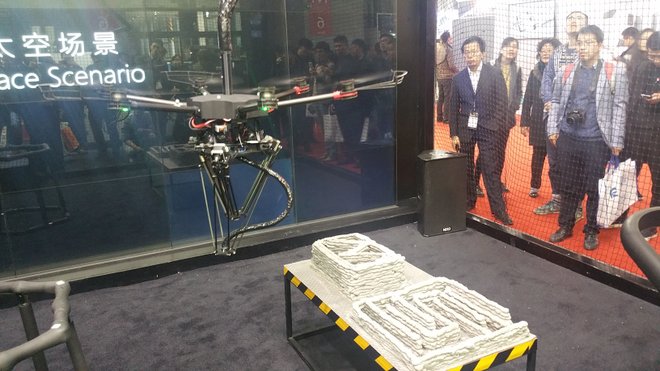
2. More 3D Printed Buildings
2018 gave the world several architectural objects created using 3D printing. Some of them are proud of the title of "the most"; in others, for the first time builders used new forms and solutions.
The largest pavilion in the world, created using three-dimensional printing, appeared in Nashville (USA). Branch Technology and its partner, engineering firm Core Studio , built it out of forty 3D printed parts. C-Fab technology was used for the construction: printing is carried out with a working area with a working area of up to 248 m². The structure weighs about 1450 kg, reaches 6 meters in height and about 13 meters in width. The printed base is made of carbon fiber and painted with metallic paint. For the first time the pavilion was demonstrated at the symposium “International Association for Shell and Spatial Structures”; now it is located on the territory of the OneC1TY business complex, in the yard space.
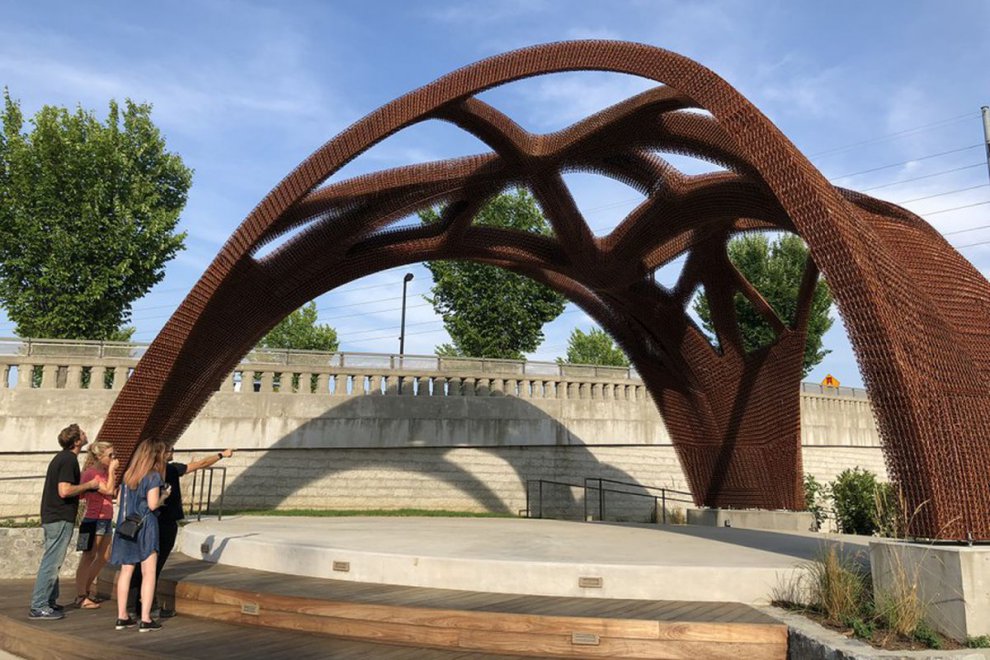
Pavilion Branch Technology
Another impressive pavilion appeared in Milan, it was erected by the Laboratory of the Faculty of Architecture of the Technical University of Milan ( ACTLAB ) in collaboration with the 3D printing farm WASP . To make the pavilion as light and durable as possible, the designers were inspired by the structure of the trabecular, or spongy, bone areas: in the human body these are the ends of long bones, for example, radiocarpal and tibia. Considering the anatomical atlas, it seems that trabeculae (plates that form a spongy structure) are arranged haphazardly, but this is not quite so. They follow the load line to ensure maximum durability. These principles were followed by the engineers of ACTLAB. It took four printers to assemble the pavilion, which printed 352 parts; print took 181 days. Biopolymer was used as a material.
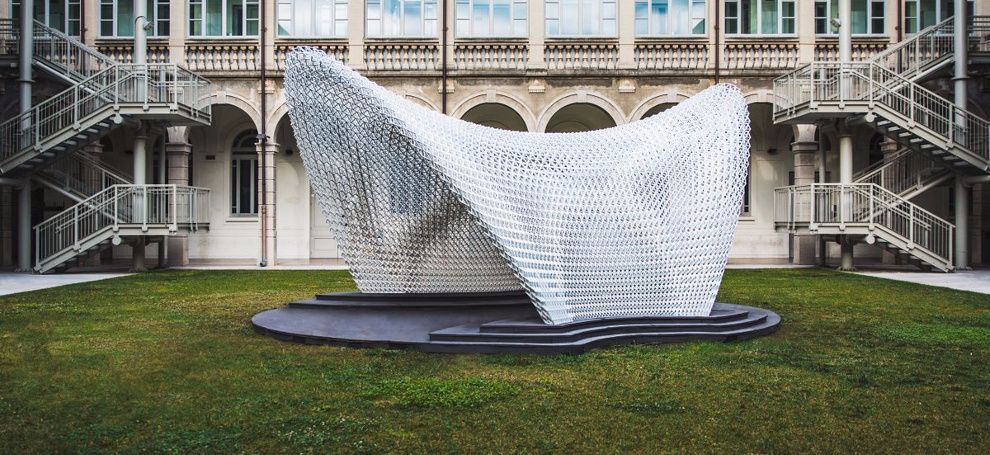
Pavilion in Milan
In China, not one pavilion was printed , but a whole group of objects: the Cloud Village project represents a new idea in organizing Chinese countryside. This is a complex of several premises of open and semi-open type, united under one roof. According to architect Philip F. Yuan , the object symbolically reflects the structure of the traditional rural community in China, where the boundary between the personal and the public is erased. And the recycled plastic from which it is made is reminiscent of environmental issues. The building was demonstrated at the Venice Biennale: it was printed in pieces at the 3D printing factory in Shanghai, after which 50 parts were shipped to Venice and assembled into a single structure.
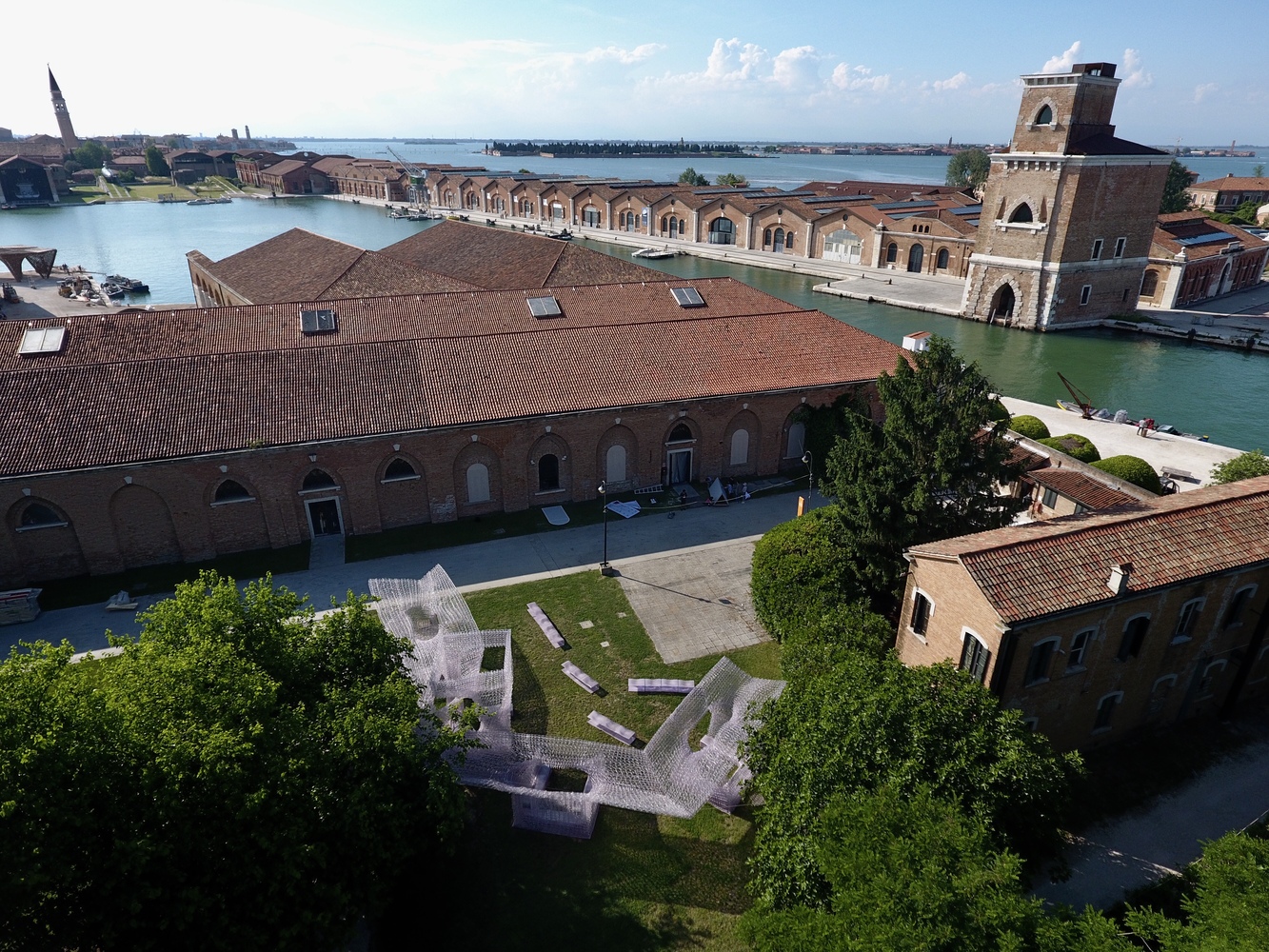
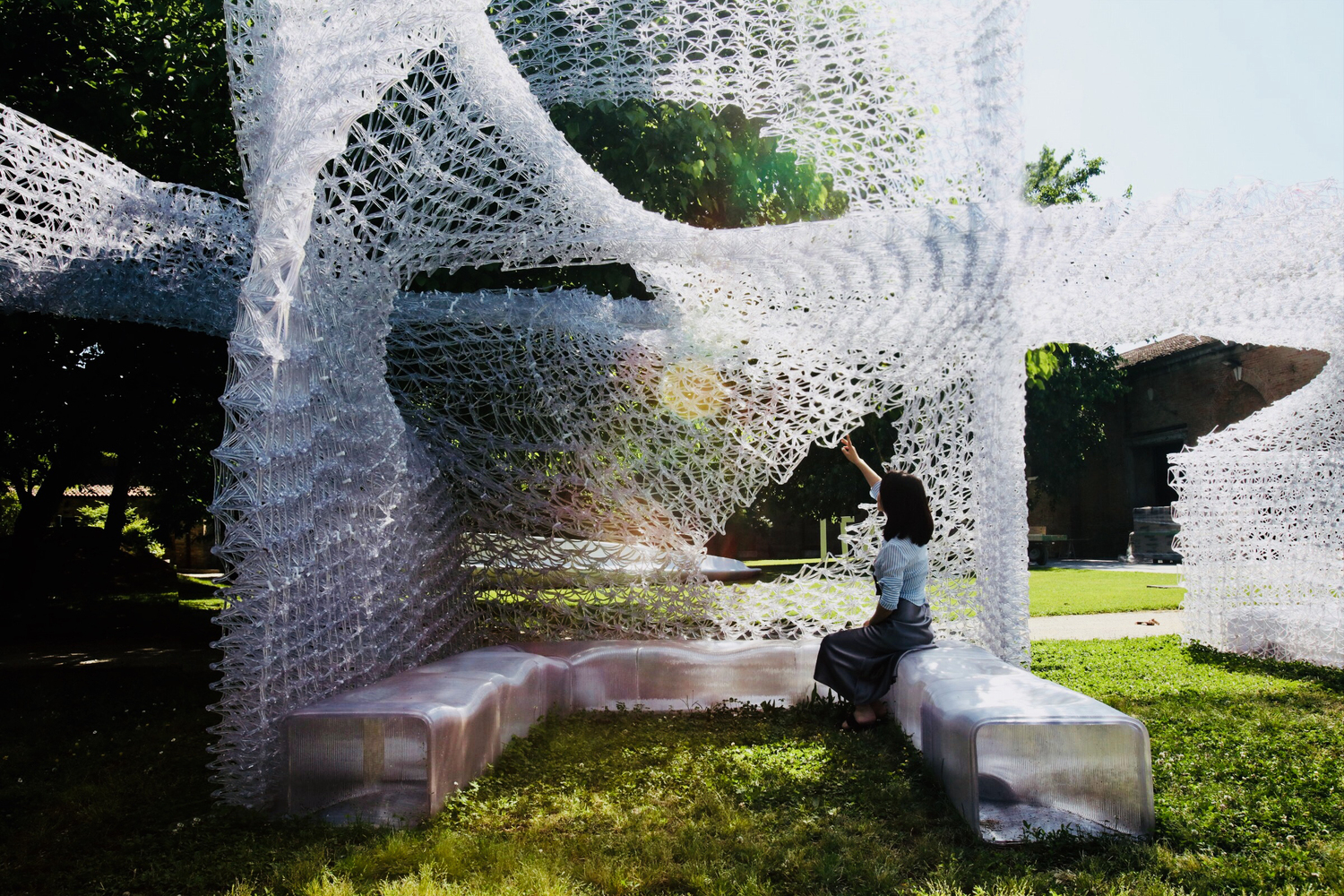
"Cloud Village" at the Venice Biennale
3. Precedents and oddities
In the United States ended the trial, which was watched by thousands of people: amateur designer Cody Wilson won the case against the State Department. Back in 2013, Wilson laid out drawings for printing a single-shot gun “The Liberator” (“Liberator”), but law enforcement officers demanded to remove them and limit distribution in the network: the authorities were concerned that the plastic weapons could not be detected by metal detectors at airports. Cody Wilson sued, emphasizing that the decision is contrary to the constitutional right to freely disseminate information. In July, the court recognized the plaintiff’s correctness and lifted the ban, but some resources (for example, Facebook) continue to ban “The Liberator” drawings on their own initiative.

Cody Wilson with Gun Liberator
China (Yinchuan district) launched the world's largest 3D printing factory. The design capacity is several thousand tons of products per year. The company owns the company Kocel Group Limited. Additive technologies remain more expensive than traditional ones (casting, extrusion, stamping), but they are more profitable to produce unique or small-scale parts, because there is no need to make expensive stamps and forms.
In Australia, began the work of the world's largest 3D printer, developed by Titomic. The size of its printing area is 900 × 300 × 1500 cm. The printer works in the innovative “cold spray” technology for 3D printing: the cartridge is filled with metal powder, which is ejected onto the substrate with a stream of hot gases and forms the desired product.
The German company BigRep also presented to the public a large-format printer: BigRep ONE. To demonstrate his work, they released a concept - a waterless bicycle tire with a honeycomb-like structure made of thermoplastic polyurethane. They do an excellent job of depreciation and are not afraid of punctures.
In London , using a 3D-print saved the heritage of UNESCO: the restoration of the Grand Pagoda in the Kew Gardens Botanical Garden is being completed. This is the first Chinese-style building in Europe, built in the 18th century under Queen Augustus. In the course of the restoration work on the roofs of the longlines, it was necessary to return 72 figures of dragons that disappeared from there 230 years ago. According to legend, King George VI sold precious statues to cover card debts. But historians believe that the dragons were wooden and simply rotted. The prototype of the decoration was cut out of wood, then scanned in 3D. Already in the digital version they added details, after which they printed all the dragons in the right size from a lightweight and durable polymer. As the restorers noted, the new dragons are lighter than the original ones, so the pressure on the ancient pagoda is much less.

In China, scientists have created an ear for a child with congenital deformity of one of the auricles, scanning a healthy one. According to this model, a biodegradable frame was created with the help of a printer, on which an auricle from cartilage cells was later “in vitro”. She was successfully transplanted into a small patient.
In the USA, they also successfully performed an operation to restore the missing part of the body, but not to a man, but to an animal. Alligator Mr. Stubbs, who was rescued from smugglers and transferred to the park Phoenix Herpetological Society, lost its tail under unclear circumstances. For crocodiles, the tail is very important, it helps to quickly swim and change direction. Therefore, the park curators together with Stax3D printed a uniform on the printer and molded several tailings for Mr. Stubbs from silicone. According to them, thanks to the prosthesis, he has become much more active, and his overall condition has improved markedly.

Mr. Stubbs with a new tail
All those who are interested in 3D printing news, Smile-Expo invites October 12-13 to 3D Print Expo (Moscow, Sokolniki) . We changed the format of the event, focusing on the practical part. There will be no conference this time, but we will maximally expand the exhibition and add to it a free lecture hall for all visitors. We will also organize a workshop zone where you can practice modeling, printing and drawing with 3D pens.
Source: https://habr.com/ru/post/421155/
All Articles